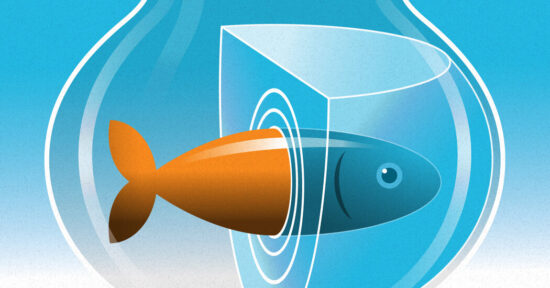Scorching temperatures blanketing much of the country make cool showers enticing. But beware the water bill.
Average water and sewer bills — they are often combined — have increased about 50 percent over the last decade, according to Bluefield Research, an advisory firm, and are expected to continue to rise. Rates vary, but the average monthly bill for water nationally was about $49 last year, up from $32 in 2012. (The numbers are based on average monthly household water use in the 50 largest U.S. cities.)
Inflation is one reason for the increase, along with supply chain disruptions and the cost of replacing older pipes and equipment, said Charlie Suse, an analyst with Bluefield. Some cities delayed rate increases during the pandemic and are now catching up. Prolonged drought in the West isn’t helping. Cities like Phoenix, facing tight water supplies, are raising rates to cover costs and encourage conservation.
“Given the toll that climate change continues to have on water infrastructure,” Mr. Suse said in an email, “we expect drought conditions to continue to impact rates in many cities.”
Even if rates haven’t spiked in your community, they are likely to do so in the future. Many water districts serve growing populations, leading to higher costs for treatment and distribution. And some water districts are having to replace systems that date to the post-World War II era, said Veronica Blette, chief of the Environmental Protection Agency’s WaterSense program, which helps consumers and businesses find ways to use less water.
“Rates are going to go up,” Ms. Blette said. “That’s the reality of it.”
Where does that leave consumers?
Reducing the amount of water you use can help. Americans use an average of 82 gallons each day, per person, at home, according to WaterSense.
Traditional advice often focuses on behavior, like taking shorter showers or turning off the faucet while brushing your teeth. (The latter can save eight gallons a day, the E.P.A. says.)
That helps, but households can use at least 20 percent less water by installing water-efficient fixtures and appliances, the E.P.A. says. Bathrooms are a good place to start because they may account for more than half the water that families use indoors. Consumers can update with items like low-flow shower heads and toilets. The latest toilets use just over a gallon of water per flush, or even less, compared with several gallons for older models.
In general, if your toilet is more than 10 years old, you’ll probably save water (and money) by replacing it, said Mary H.J. Farrell, a senior editor at Consumer Reports.
That doesn’t mean you have to replace every water-using fixture or appliance at once. “Do it when something breaks,” Ms. Farrell suggested. (Some water utilities may offer discounts or rebates if you upgrade.)
Consumers may be wary of low-flow toilets because some early versions didn’t always work well, but newer models are generally fine, Ms. Farrell said. (Consumer Reports no longer tests older, “water hog” toilets, she said.)
Kitchens and laundry rooms are other places to look for water savings because high-efficiency dishwashers and washing machines use far less water than older models. (Another tip: Wash only full loads of dishes and clothes.)
Low-water landscaping is becoming increasingly popular as a way to conserve water and cut costs. Outdoor watering accounts for more than 30 percent of household water use on average, but can be twice that proportion in arid regions, the E.P.A. says.
Using native plants and grasses, which are attuned to local weather patterns, and “hydrozoning” — grouping plants based on their water needs — can help reduce watering, said Tony Koski, an extension turf specialist at Colorado State University.
Lawns have become stigmatized because of a reputation for requiring heavy watering and fertilizing, he said, but, “if you have kids and dogs, you probably want some lawn.”
Ms. Blette suggested thinking about lawns as you would carpeting. “Do you really need wall-to-wall?” she asked. Perhaps a smaller “accent rug” will do.
If you’re renovating your yard, Mr. Koski recommends hiring a professional landscape designer who knows what plants should be placed together to make watering as efficient as possible. “They know what design flaws to avoid,” he said.
If you use an irrigation system, controls can be installed that sense when it has rained (so more watering isn’t needed) or when it is windy (and water will be dispersed) and turn off automatically. The devices can cost a few hundred dollars, but you can probably recoup the money in a lower water bill.
A common problem is water lost through leaks; homeowners may not realize they have one until they get a larger-than-normal water bill. Some water districts bill quarterly, so the delay can be costly.
The Alliance for Water Efficiency, a Chicago-based nonprofit, recently analyzed the use of a “smart” meter system at four public utilities, which notified customers quickly if water flows exceeded certain thresholds over a period of time, suggesting a leak. The study found “statistically significant” reductions in the volume of leaks, saving as much as three gallons per meter per day.
If your water department doesn’t have a smart system, you can buy in-home leak detection devices at many retailers.
Here are some questions and answers about conserving water and lowering your bill:
How can I tell how much water my household uses?
The Alliance for Water Efficiency offers a water calculator on its website. Fill in a few questions about your appliances and water-use habits, and it creates a report that compares your water use with an average home and a “water wise” home, along with suggestions for using less water.
What if I can’t afford to pay my water bill?
Like gas and electric utilities, water utilities typically offer payment assistance or flexible payment options to help low-income customers pay their bill and avoid loss of service. Call your water system to ask if you qualify.
Payment assistance programs are often underused, in part because people are unaware of them or the programs may have burdensome application requirements, according to a report from the U.S. Water Alliance, a nonprofit group that promotes sustainable water policies. A study of alternative pricing strategies in two large Midwestern cities by the alliance and Stantec, a planning and engineering firm, found that basing water rates at least partly on factors like the size of a building or the number of bedrooms, rather than just the amount of water used, can help ease the burden of higher rates on low-income households.
How can I find water-saving fixtures and appliances?
Look for the E.P.A.’s WaterSense label, which means the items have passed standards for efficiency and performance. Consumer Reports (available by subscription) tests a variety of appliances and gives environmentally friendly products a green leaf, indicating a “Green Choice” product.







